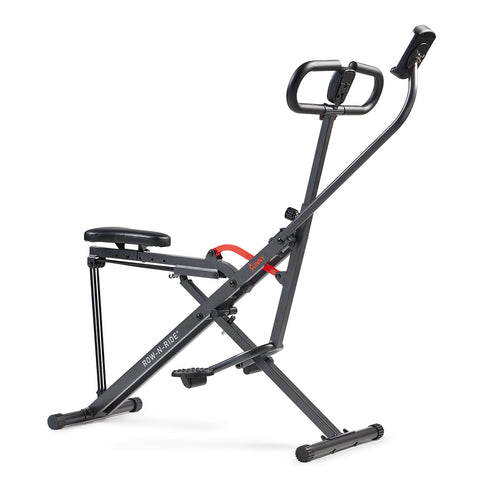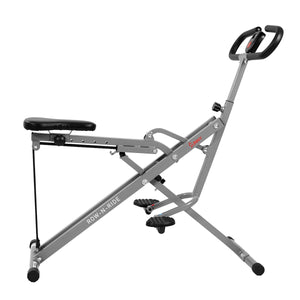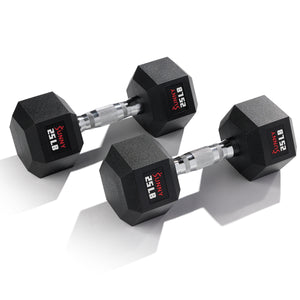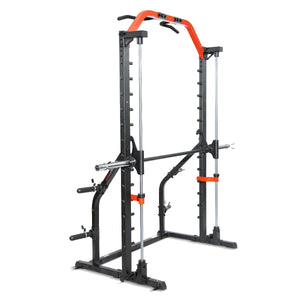One of the most popular movement patterns frequently highlighted in a workout program is the squat. And not without good reason – the squat is a foundational exercise at the root of many other lower body movements such as the lunge, single leg squat, and numerous power exercises. Mastering the squat allows you to progress to more complicated movements and feel stronger while doing them. Not to mention the functional applications of squatting, like lifting heavy objects, picking something up from the floor, or various household chores. Confidence in your ability to squat improves both lower body strength and quality of life.
If you’re new to exercise and are having trouble with understanding the movement pattern of the squat, Sunny is here to help! Equipment can be a great way to teach you how your body should feel through the squat and improve your ability to safely navigate this movement in both the gym and your day-to-day activities.
Movement Mechanics to Build a Strong Squat
First, let’s start with the basics. Become proficient in a bodyweight squat (sometimes referred to as an air squat) and you can then build up to other squat variations and beyond. Here’s how!
- Start with your feet about hip width apart, toes point straight ahead or slightly angled out (this is a matter of personal preference – test it out and find what feels best in your body).
- Bend your knees and hinge at the hips, but keep your chest lifted and open. Your knees should track over your second and third toe; don’t allow them to drift in towards each other or too far away from each other. Sit your hips back so your knees don’t push forward over your toes (a quick note on that below).
- Once your knees reach at least 90 degrees (you can go lower if it feels comfortable and you have the joint mobility for it), push through your heels and squeeze your glutes to stand back up.
- Hand placement can vary in a bodyweight squat depending on your preference, ideally held together at your chest or with your arms extended out in front of you for counterbalance.
*Note on knee placement: Until recently, guidelines for squatting advised that your knees stay behind your toes to minimize stress placed on the knee joint. However, your knees go over your toes many times throughout the day – anytime you walk downhill or go downstairs, for example. So, it is important work this type of exercise into your routine. However, do start slow and gradually work up to exercises that incorporate this movement pattern. In a basic squat focus on keeping your knees behind your toes, but also work on movements that incorporate your knees going past your toes. You can learn more about this topic here.
Using Equipment to Perfect Your Squat Form
Once you have mastered the bodyweight squat, you can start to incorporate squat ride that helps reinforce good form or challenge your strength. Sunny has options for all the above! Use this guide to find out which equipment might be right for you.
Row-N-Ride®
If you have trouble with your form in the bodyweight squat, are recovering from a lower body injury, or want to incorporate your upper body into your squat, the Row-N-Ride is the answer!
As a squat assist machine, you will work on activating all the muscles necessary for a squat in a low weight bearing environment. If you have an injury, it allows you to continue to build strength as you rehabilitate back to your full capabilities. What’s more, it teaches you the movement pattern of the squat as it guides you through each repetition. If you are a beginner and are still working on mastering the squat, this is a great opportunity to learn.
We can’t forget about the “row” in the Row-N-Ride! This machine is a full-body experience and incorporates the upper body, effectively building muscle in the upper back, arms, and core. Check out the Row-N-Ride workouts with our amazing trainers on the SunnyFit® app!
Dumbbells and Kettlebells
The use of free weights, such as dumbbells and kettlebells, will allow you to challenge yourself a level above the bodyweight squat. As you add more weight, your muscles will be forced to adapt to the new challenge, and you will subsequently increase your strength and muscle mass.
Additionally, you can use free weights to help reinforce your squat form by implementing a goblet squat. This squat variation requires you to hold a dumbbell or kettlebell vertically at your chest and reinforces your torso to stay upright throughout the movement.
This is the perfect option when you are ready to level up your bodyweight squat!
Smith Machine
If you’re curious about lifting with a barbell but feel concerned about safety, then the Smith Machine is a great place to start. The Smith Machine is a large rack with a bar attached on two guided railings, so the bar path is fixed throughout each movement. If you start to feel overly tired at any point throughout the squat, you can easily rack your weight and take a break.
Practice both the back squat and front squat on this machine to progressively build strength and eventually graduate to a barbell if that’s your goal. Squat form can become a little more challenging to maintain when using a barbell, especially with keeping your torso upright. The Smith Machine helps encourage proper form while learning this new modality.
Barbell
This a great option for your squat if you are trying to build strength in big ways. The bar allows you to load more weight to your squat than any of the previous options, and effectively provides a greater challenge to the movement.
The barbell back squat and barbell front squat are both excellent compound movements that not only build lower body strength, but also build strength in your core and upper body. The back squat will focus more on the muscles of your posterior chain (back of your body), while the front squat will focus more on the muscles of your anterior chain (front of your body).
The Final Rep
Mastering any variation of the squat can gift you with countless health and fitness benefits. Use your squat knowledge and skill as a base for other exercises, improve your functional abilities, and build strength where it counts. If you’re new to this type of movement, start with the basics as a first step, and then build upon that with Sunny fitness equipment to travel further down the road on your fitness journey. You got this!































Add Your Name & Email
Please enter your name and email to continue.We won’t display your email publicly.